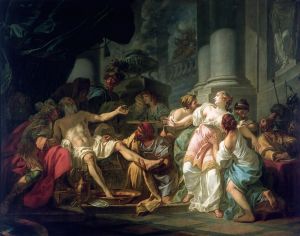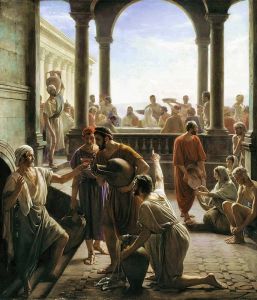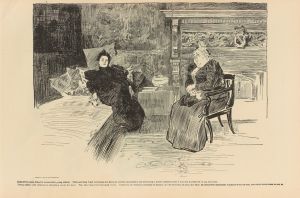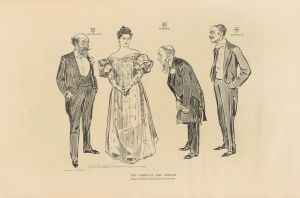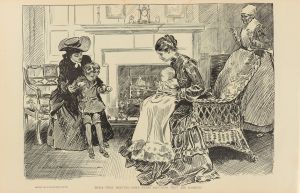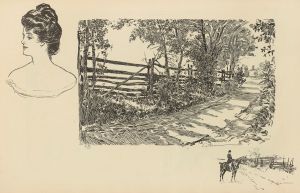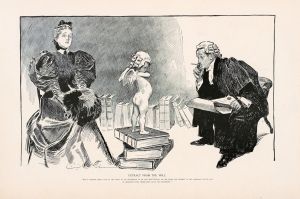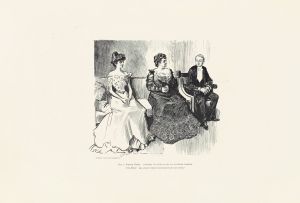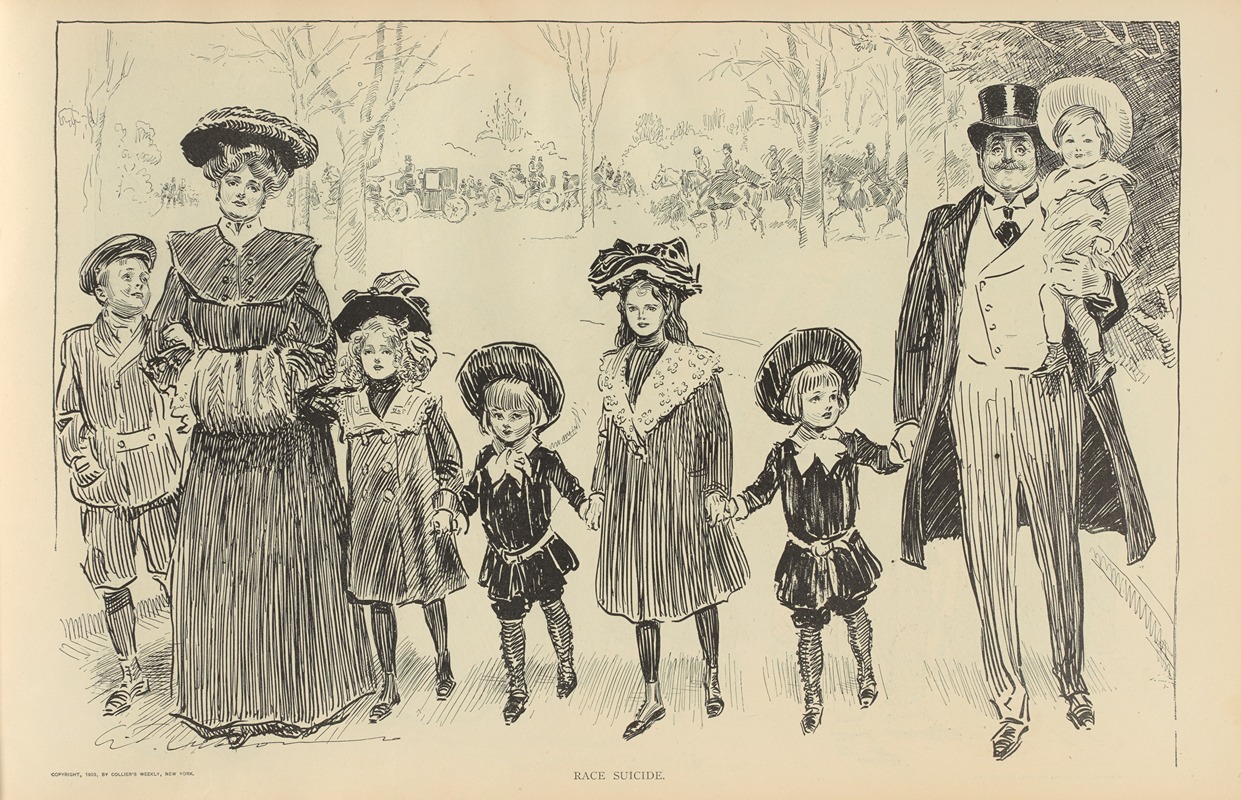
Race suicide
A hand-painted replica of Charles Dana Gibson’s masterpiece Race suicide, meticulously crafted by professional artists to capture the true essence of the original. Each piece is created with museum-quality canvas and rare mineral pigments, carefully painted by experienced artists with delicate brushstrokes and rich, layered colors to perfectly recreate the texture of the original artwork. Unlike machine-printed reproductions, this hand-painted version brings the painting to life, infused with the artist’s emotions and skill in every stroke. Whether for personal collection or home decoration, it instantly elevates the artistic atmosphere of any space.
"Race Suicide" is a notable illustration created by Charles Dana Gibson, an influential American graphic artist best known for his creation of the "Gibson Girl," an iconic representation of the American woman at the turn of the 20th century. The illustration was published in 1903 and reflects the social and cultural concerns of its time.
Charles Dana Gibson was born on September 14, 1867, in Roxbury, Massachusetts. He studied at the Art Students League in New York City and began his career as an illustrator in the late 19th century. Gibson's work appeared in various popular magazines, including Life, Harper's Weekly, and Scribner's, making him one of the most prominent illustrators of his era.
"Race Suicide" addresses the anxieties surrounding declining birth rates among certain segments of the American population, a topic that was widely discussed in the early 20th century. The term "race suicide" was popularized by President Theodore Roosevelt, who used it to describe the perceived threat to the nation's future posed by the declining birth rates among native-born Americans, particularly those of Anglo-Saxon descent. Roosevelt and others feared that this decline would lead to the dominance of immigrant populations, which they believed would undermine the cultural and racial integrity of the United States.
The illustration by Gibson captures this sentiment through its depiction of a well-dressed, affluent couple, presumably of Anglo-Saxon heritage, who are childless. The couple is shown in a domestic setting, surrounded by luxury and comfort, yet there is a sense of emptiness and foreboding. The image suggests that their choice to remain childless, or to have fewer children, contributes to the decline of their "race" and the potential consequences for the nation's future.
Gibson's work often commented on social issues and reflected the prevailing attitudes of his time. "Race Suicide" is a prime example of how his illustrations could encapsulate complex social debates and present them in a way that was accessible to the general public. The illustration serves as a historical artifact that provides insight into the concerns and values of early 20th-century American society.
Charles Dana Gibson continued to be a significant figure in American art until his death on December 23, 1944. His legacy endures through his extensive body of work, which includes not only the "Gibson Girl" but also numerous illustrations that captured the essence of American life and culture during his lifetime. "Race Suicide" remains a poignant reminder of the social and demographic issues that preoccupied Americans in the early 1900s.





